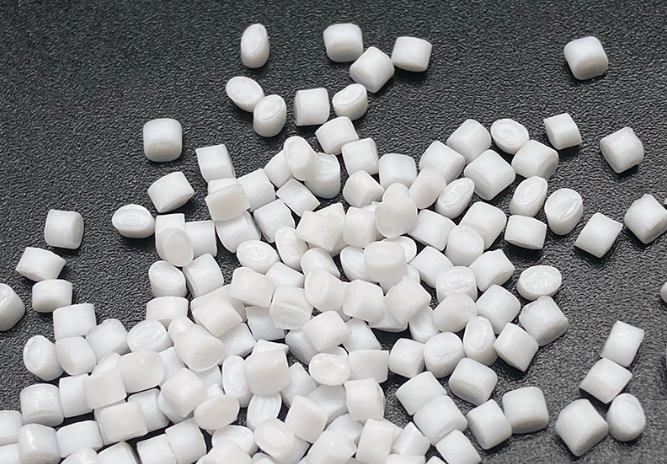PET, namely polyethylene terephthalate, is a widely used thermoplastic polyester, and its production volume ranks among the top in synthetic resins. It is indispensable, ranging from daily packaging to high-end products.
I. Synthesis Methods
Transesterification Method (Indirect Method)
Raw Material Mixing: Select dimethyl terephthalate (DMT) and ethylene glycol (EG), and mix them in a molar ratio of 1:2.5 to 1:3.
Transesterification Reaction: Add a catalyst such as zinc acetate, and heat up to 150 - 200°C. The methyl ester group of DMT exchanges with the hydroxyl group of EG to form bis(2-hydroxyethyl) terephthalate (BHET) and methanol. Methanol needs to be distilled out to drive the reaction forward.
Polycondensation Reaction: Place BHET under a high vacuum of 0.1 - 10 Pa at 270 - 290°C, add a catalyst such as antimony trioxide. The molecular chains grow through dehydration condensation to obtain PET.

Direct Esterification Method (Direct Method)
Raw Material Preparation: Mix terephthalic acid (PTA) and ethylene glycol (EG) in a molar ratio of 1:1.2 to 1:1.5.
Esterification Reaction: Add a titanium-based catalyst, and heat up to 220 - 260°C. The carboxyl group of PTA undergoes esterification with the hydroxyl group of EG to form BHET and water. Remove water in a timely manner to promote the reaction.
Polycondensation Reaction: After esterification, raise the temperature to 270 - 290°C, maintain a high vacuum, and complete the polycondensation to obtain PET.
II. Structural Characteristics
At the Molecular Structure Level
PET is composed of terephthalic acid and ethylene glycol units connected by ester bonds. The benzene ring endows the molecular chain with regularity and rigidity, while ethylene glycol provides flexibility. There are strong van der Waals forces between the molecular chains, and its regularity makes it easy to crystallize. The simple formula of the repeating unit is -[OCH?CH?O - CO - C?H? - CO]-.
Crystalline State Characteristics in the Aggregate Structure
Under appropriate conditions, the molecular chains are orderly arranged into a crystalline structure. The crystallinity is between 30% and 80%, and there are forms such as spherulites and single crystals. If the cooling rate is slow, large spherulites are likely to form; if the cooling rate is fast, crystallization will be inhibited. Crystalline PET has high density, strength, and heat resistance.
Characteristics of the Amorphous State
Under the influence of rapid cooling or additives, the molecular chains cannot be regularly arranged and form an amorphous state. Amorphous PET has good transparency, but its strength and heat resistance are relatively weak. In actual products, the crystalline state and the amorphous state often coexist, and the process can be adjusted to change the proportion.

III. Classification Situations
Classification by Polymerization Method
Conventional PET: Synthesized by the transesterification method or the direct esterification method, and is widely used.
Modified PET: A third or fourth monomer is introduced during polymerization for modification. For example, adding isophthalic acid (IPA) can obtain PETG, which has better transparency, toughness, and processability, and is used in high-end packaging and optical products.
Classification by Product Morphology
①PET Fiber: Divided into filament and staple fiber. Filament is used in textiles and industrial yarns; staple fiber is blended with natural fibers.
②PET Film: There are ordinary films and aluminized films, which have good mechanical, optical, and barrier properties and are used for packaging.
③PET Injection-molded Products: Such as plastic bottles, trays, etc.
④PET Sheet: Used for thermoformed packaging boxes, etc.
IV. Application Fields
1.Packaging Field
It is used for the packaging of beverages, foods, and pharmaceuticals, such as beverage bottles, food packaging boxes, and medicine bottles, taking advantage of its transparency, barrier properties, and chemical stability.
2.Textile Field
It is used for clothing fabrics and home textile products. For example, clothing is stiff, wrinkle-resistant, and home textiles are durable and easy to clean.
3.Electronics and Electrical Appliances Field
PET film is used for electronic components, and injection-molded products are used for electrical appliance housings.
4.Automotive Field
PET fiber is used for interior decoration, and injection-molded products are used for components.
5.Optical Field
PETG is used for optical lenses and optical disc substrates.
6.Medical Field
PET is used in the medical field, such as disposable syringes and infusion bags.



